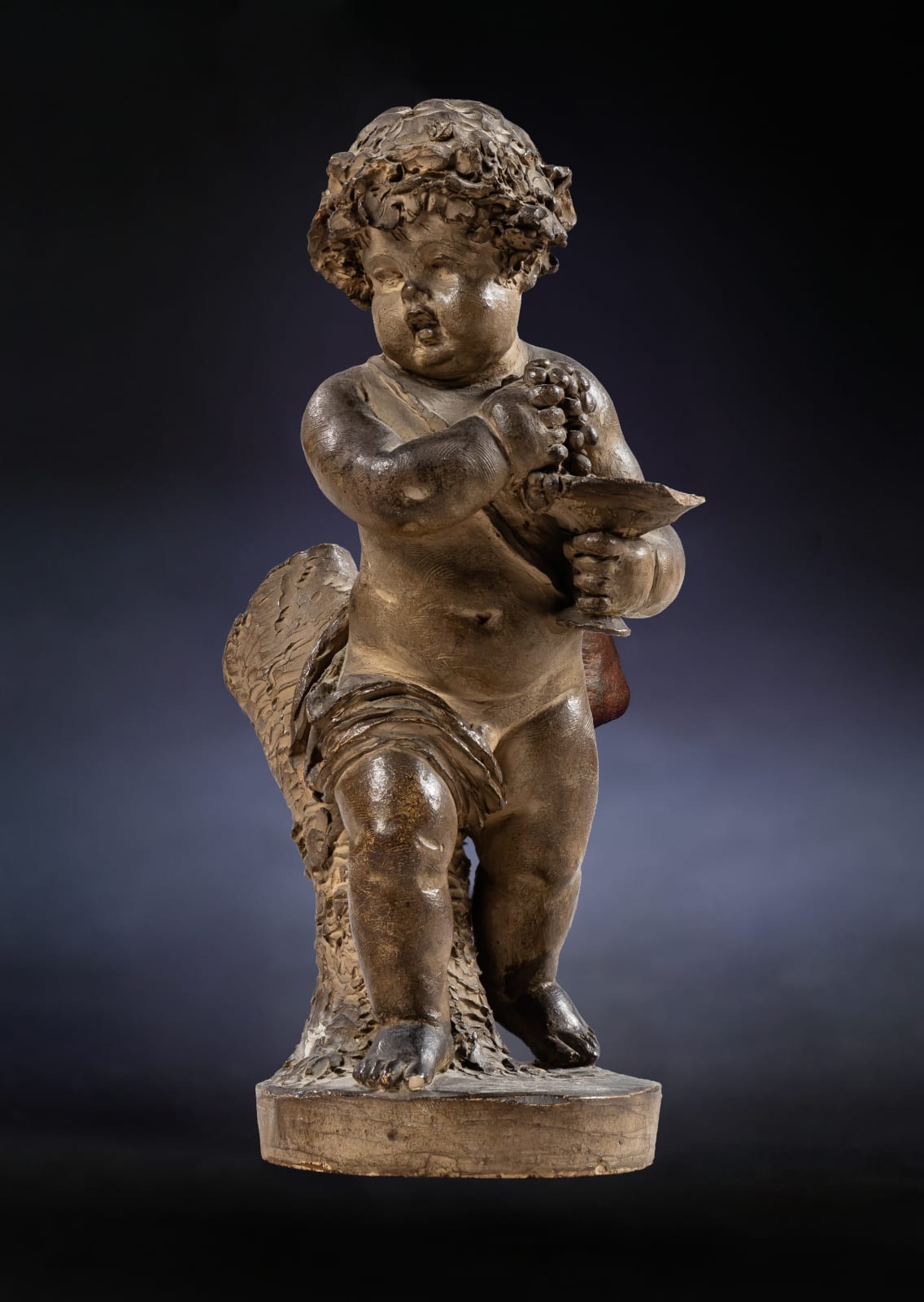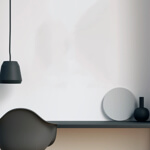Joseph-Charles Marin (Paris 1749 - 1834)
A Putto as Bacchus
terracotta
height 15,5 cm
signed 'Marin' on the back
Joseph Charles Marin was born in 1759. A student of the sculptor Clodion, Joseph Charles Marin made several attempts to win the grand prize in sculpture under the Ancien Régime,...
Joseph Charles Marin was born in 1759. A student of the sculptor Clodion, Joseph Charles Marin made several attempts to win the grand prize in sculpture under the Ancien Régime, before the Revolution. He later won the grand prize in Rome for sculpture in 1801 with a bas-relief titled Caïus Gracchus leaving his wife Licinia (located in Paris, at the École Nationale Supérieure des Beaux-Arts).
While his early style was elegant, light, and graceful, heavily influenced by his master Clodion, Marin adopted a more austere style and subjects in the latter part of his career, in line with the neo-classical norms of the time. He became a professor at the École des beaux-arts in Lyon in 1813, replacing his former teacher Joseph Chinard after the latter's death
The present charming work depicting A Putto as Bacchus is a beautiful example of Marin’s early work, and compares very favorably to his Silenus with two Children (Galerie Perrin, Paris), especially in the modeling of the hair and drapery, as well as that of the hands, the faces and the laurel wreath. As the latter work is signed and dated 1786, when Marin was twenty-seven years old and still a student at the Royal Academy of Painting and Sculpture, the present work, too, may be considered an early work, to be dated around this period.


